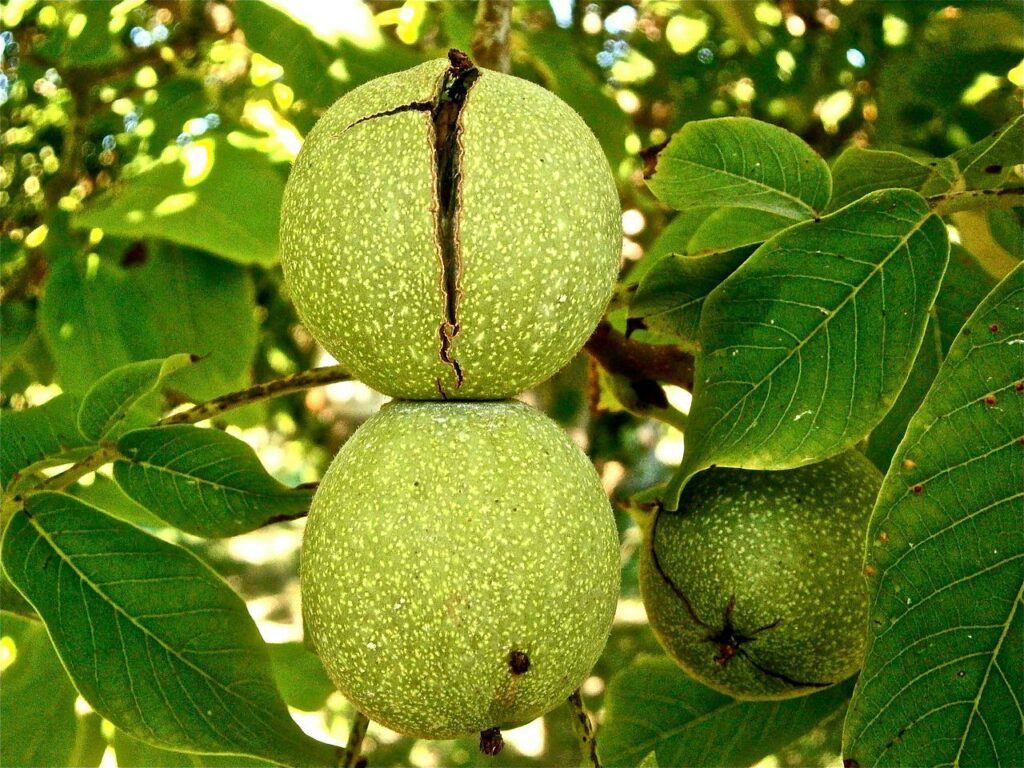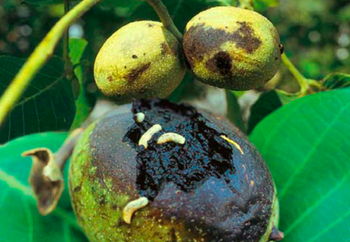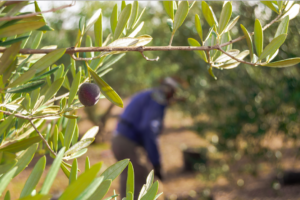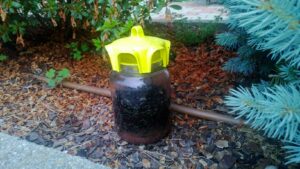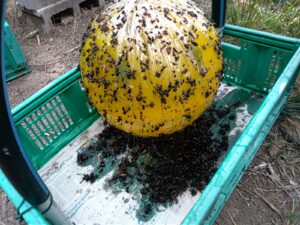Walnut cultivation faces two significant threats: the walnut fly (Rhagoletis completa) and the codling moth (also known as the apple worm moth or carpocapsa). One highly effective method, without resorting to insecticides, involves the combined use of two food bait traps to protect walnuts from both the fly and the codling moth. Let’s explore how this approach works
Sommario
WALNUT FLY MASS TRAPPING
To minimize time-consuming treatments in the orchard or to avoid the use of insecticides altogether, the use of Tap Trap traps is indispensable for combating the walnut fly and codling moth. Well-known for many years and endorsed by research institutes, Tap Trap comes into action when the insects become active, specifically during the flickering stage and when the first adults are airborne. In both cases – be it the walnut fly or codling moth – it is the larvae that cause damage (more details on this later). Our objective is to prevent the mating of adult insects and, consequently, reduce egg laying. Understanding when the problem arises is crucial for achieving this goal
ORGANIZING THE MASS TRAPPONG
When is it necessary to employ selective mass trapping of adults to limit mating?
- The first generation of walnut flies emerges in early July, necessitating the placement of traps in the field as early as mid-June. This type of trap is self-triggering, capturing various types of flies, including domestic flies, as a preventive measure.
- The first generation of codling moths becomes active towards the end of May, typically when temperatures reach 15-16 degrees Celsius. Interestingly, this type of trap is also effective for capturing wasps and hornets, making it doubly advantageous for our orchard.
HOW TO USE THE TRAPS
Why do we emphasize selective trapping? The use of Tap Trap prevents the capture of beneficial insects, such as bees and bumblebees. It enables us to specifically attract and monitor only the target insect for our control, making it easier to identify and manage potential pests.
Here are a couple of considerations to bear in mind when using the mass-capture traps, Tap Trap and Vaso Trap
- Position one Tap Trap per plant, in a well-exposed sunny location.
- Regularly inspect the traps and ensure the baits remain active.
- Keep the traps in the field until autumn to capture specimens from the last generation as well.

HOW TO PREPARE BAITS
Ensuring correct baiting and performing monthly checks, making necessary corrections, is crucial. Here are step-by-step guidelines to avoid mistakes and achieve maximum effectiveness from Tap Trap bottles:
- Tap Trap bait for fruit flies, especially effective for the walnut fly. Discover detailed instructions on preparing the bait, trap placement, maintenance, and useful seasonal information.
- Tap Trap bait for codling moths, ideal for walnut, apple, and pear trees
(You can also use Vaso Trap for flies: read how to do it).
WALNUT FLY AND CODLING MOTH DAMAGE ON WALNUT TREES
Pests affecting nuts have the potential to cause significant damage to the fruit generation, putting the overall production of the plant at risk. The most evident effects include:
- Early fruit drop and high risk of losing the entire crop.
- Drying of the fruit that remains attached to the plant.
- Fungal infestations caused by the attack of other pests attracted by the decaying nuts.
HOW TO KNOW IF YOUR NUTS ARE INFESTED
- A walnut bitten by the fly shows small dark spots: the fly pierces the shell and ruins the hull (but does not ruin the kernel) of the walnut. One notices the blackening of the fruit and the husk still adhering to the nut shell.
- A nut that has been hollowed out by the codling moth, on the other hand, leaves a more obvious hole (hollowed out, in fact) from which it is easy to see an outflow of material, the result of the excavation mixed with excrement from the larva.
WALNUT FLY
The fly bites the husk and lays its eggs inside. The larvae feed on the damaged husk, which blackens and rots. The blackish substance that leaks from the rot penetrates the kernel, making it inedible. The fruit falls prematurely.
CODLING MOTH
If the nut kernel is also damaged, the insect that creates the problem is the codling moth. This lepidopteran, which is famous for being responsible for the apple worm, deposits its eggs on the leaves, the larvae then reach the hull and start gnawing on it, continuing up to the hard part of the wood, and then on to the kernel, where they feed on that too. Again, the nut is no longer edible.
HOW TO PREVENT DAMAGE TO WALNUT
The most effective orchard protection strategies succeed by employing diverse defense measures against pests. Individually, each method may not prove to be the ultimate solution. However, when implemented in combination with others, they collectively yield concrete results.
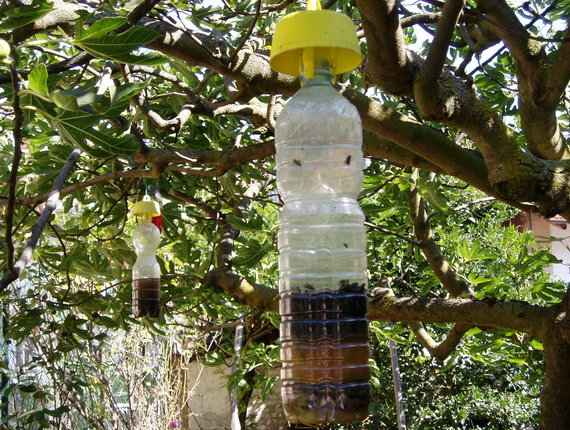
Here’s some useful advice:
- Set the traps in advance:
- codling moth flickers as soon as temperatures reach 15-16 degrees, making it beneficial to deploy traps in May.
- The walnut fly flickers in July, slightly later than the fruit fly. Therefore, it is essential to install traps as early as mid-June if they are not already in place.
- Remove infested fruit: This helps prevent larvae from tunneling out of the fruit and into the ground. Use anti-insect nets positioned on the ground beneath the canopy of the walnut tree to deter the arrival of additional larvae.
- Keep the traps in the field until the end of the season: this ensures the capture of the last circulating adults, preventing them from depositing eggs that could give rise to next season’s pests.
USEFUL TIPS
Where to buy Tap Trap
- To find out which dealer is closest to you, please send an email a info@taptrap.com, or fill out this form
Need assistance?
Articoli utili
This article was written and edited by
Maura Rizzo
All photos, unless otherwise indicated, are under a free licence for commercial use or Copyright Roberto Carello and Vanda Bellini.

